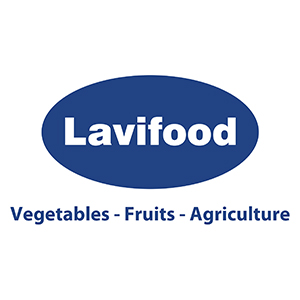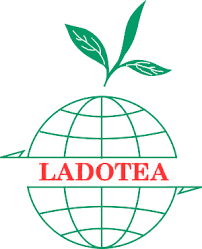- Giới thiệu
- Nhóm Công tác
- Tin tức
- Thông tin về FTA
- Tài Liệu
- Sự kiện
- Liên hệ
Rice production has been the most successful in the past 10 years
Floods, risk of early and deep saltwater intrusion
On September 14 in Can Tho City, Deputy Minister of Agriculture and Rural Development Hoang Trung chaired a preliminary conference to summarize crop production in the summer-autumn, fall-winter, and 2023 seasons, deploy the production plan for the winter-spring crop of 2023 - 2024 in the Mekong Delta

According to a report from the Department of Crop Production (Ministry of Agriculture and Rural Development), the rice cultivation area in the Mekong Delta in 2023 is estimated to reach over 3.8 million ha, an increase of more than 13 thousand ha; productivity is estimated at nearly 63 tons/ha and output is estimated at nearly 24 million tons, an increase of 416 thousand tons over the same period in 2022.
In the winter-spring crop of 2023 - 2024, the Mekong Delta region plans to sow nearly 1.5 million ha, with an estimated yield of 72.24 tons/ha, and an output of over 10.6 million tons. Currently, the Department of Crop Production has provided a specific cropping time frame and planting area for each region in the Mekong Delta in the coming winter-spring crop.
Mr. Tran Ba Hoang, Director of the Southern Institute of Water Resources Research, cited the forecast results of The National Center for Hydro-Meteorological Forecasting and said that the El Nino state will maintain until February 2024. The flood peak in the Mekong River upstream area is likely to appear in the first half of October. However, Mr Hoang estimates that the flood peak at stations in Tan Chau and Chau Doc will be lower than in the same period in 2022 and much lower than the average of many years.
Therefore, floods combined with high tides mainly occur in the middle and coastal areas with about 81 cells, with a scale of over 16 thousand ha at risk of being affected. Among them, Hau Giang province is the most affected, followed by Kien Giang. It is forecasted that the evolution of saltwater intrusion will be unpredictable, the risk of saltwater intrusion in the dry season 2023 - 2024 will appear earlier and deeper compared to the average of many years, at times equivalent to the period 2015 - 2016 and 2019 - 2020.
To successfully produce the winter-spring crop of 2023 - 2024, Deputy Minister Hoang Trung recommends that specialized agencies and localities in the Mekong Delta region focus on planting suitable to climate and weather conditions, preventing drought and saltwater intrusion. At the same time, update weather developments, meteorology, hydrology, and harmful organism forecasts to have timely response solutions.
The irrigation system needs to be strengthened and renovated to prepare to cope with drought, saltwater intrusion, and storing fresh water early. The Deputy Minister requested the Department of Crop Production to review, develop and deploy an appropriate and flexible production plan for the winter-spring crop of 2023 - 2024. For the autumn-winter rice area, the 2023 crop is ripe and needs to be harvested quickly.
Currently, the average amount of seeds sown in the Mekong Delta is 110kg/ha, this number is too high compared to the North (only about 40kg/ha). Therefore, Deputy Minister Hoang Trung requested localities to promote mechanization and raise awareness for local farmers in reducing the amount of seeds sown to reduce production costs and improve economic efficiency.
The rice industry has been the most successful in the last 10 years
Mr. Le Thanh Tung, Deputy Director of the Department of Crop Production (Ministry of Agriculture and Rural Development), assessed that rice production in 2023 achieved the most success in the past 10 years. In addition to success in planted area and output, 2023 also recorded high rice prices and increased export output.
Sharing the picture of the rice export market, Mr. Nguyen Ngoc Nam, Chairman of the Vietnam Food Association (VFA) analyzed, that at this time, Vietnamese rice businesses are starting to negotiate with customers to find rice export markets.
The sowing time for the early winter-spring crop begins on October 10 and will be harvested in January 2024. Meanwhile, the fall-winter 2023 crop has now begun harvest and it will last until December. This will create favourable conditions for businesses with raw materials to serve the rice export market.
Faced with concerns that from now until the end of 2023 and early 2024, Vietnam will not be able to export more than 1.2 million tons of rice compared to 2022, Mr Nam affirmed that this number is within the range of Vietnamese businesses.
“In the last 4 months of the year, on average, businesses can export 400 thousand tons of rice each month, which is normal. Because the enterprise's capacity to export rice by sea in the highest month is over 800 thousand tons", Mr. Nam is optimistic about the rice export market in the last months of the year.
Also according to Mr. Nam, in recent years, the Philippines has been the number 1 export market of Vietnamese rice, accounting for over 40% of total rice exports. Recently, many partners from other countries have asked Vietnamese businesses to provide regular white rice at a price of $ 30 - 40/ton lower than the rice imported by private businesses.
Tin liên quan
PSAV Attends the 30th Anniversary Celebration of Cargill Vietnam2025/10/23
Plant health management helps increase coffee yield up to 15%2025/10/16
An Giang to host 2025 OCOP forum for sustainable development2025/09/25
Viet Nam and France foster cooperation on blue economy and sustainable environment2025/09/29
Agriculture and Environment exhibition ready for National celebration2025/08/27



 Điều lệ hoạt động
Điều lệ hoạt động



















































